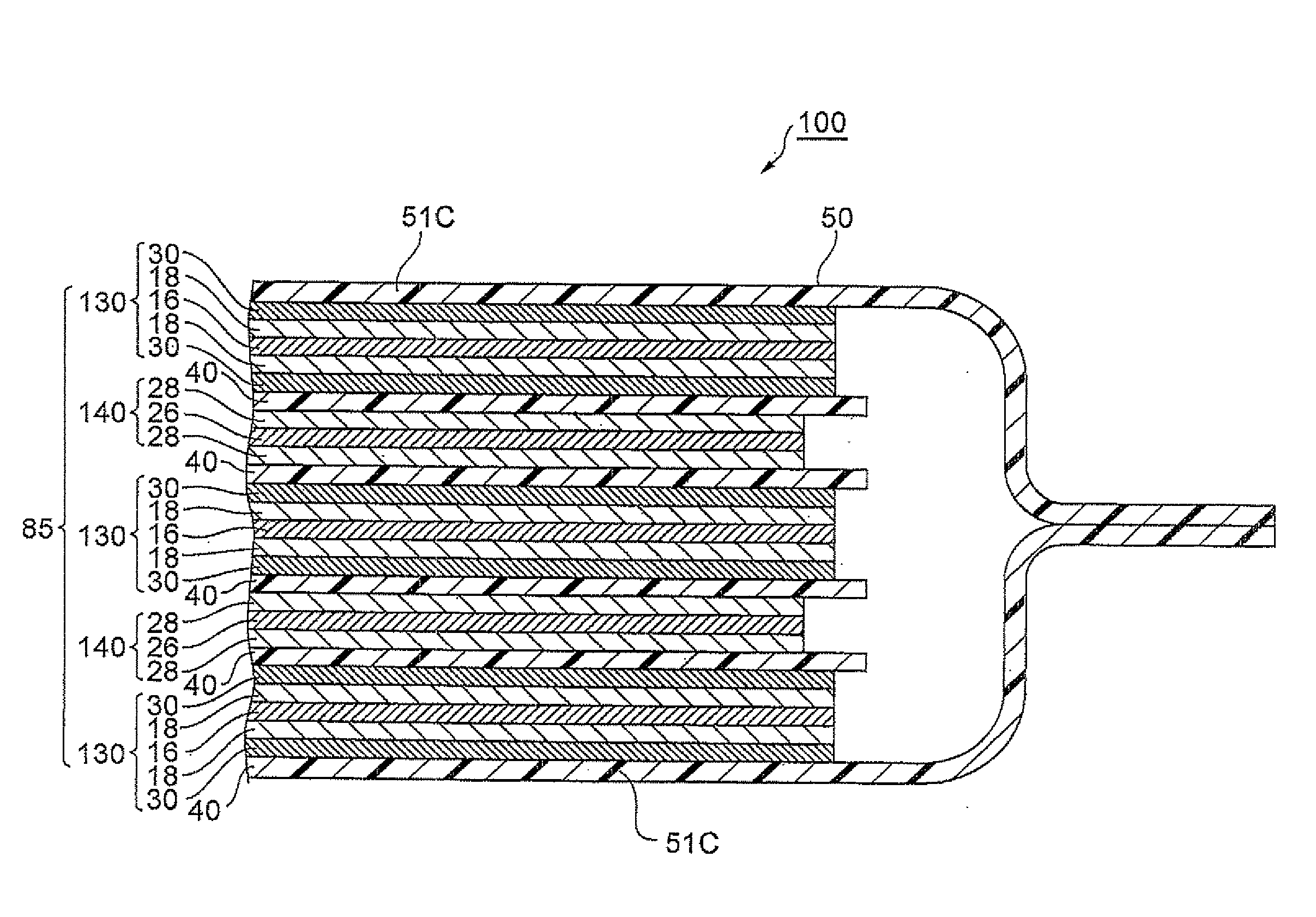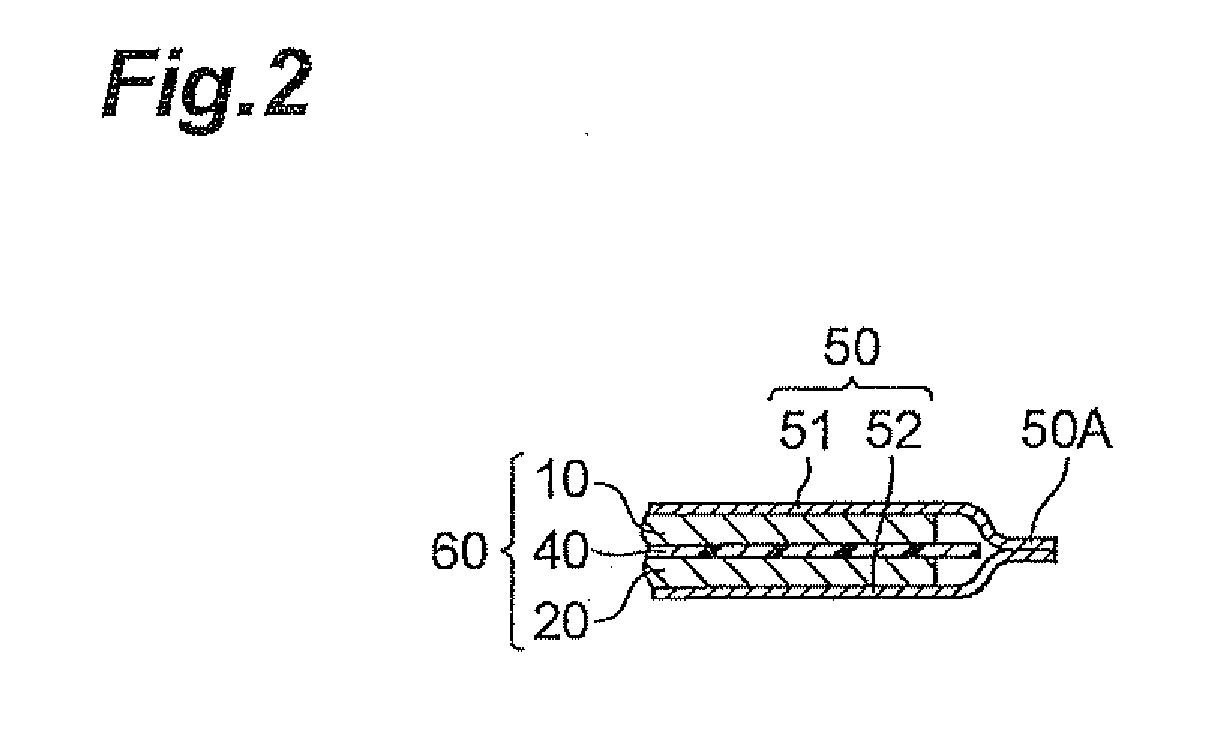Electrode for lithium ion secondary battery and lithium ion secondary battery
- Summary
- Abstract
- Description
- Claims
- Application Information
AI Technical Summary
Benefits of technology
Problems solved by technology
Method used
Image
Examples
example 1-1
[0211](Preparation of Negative Electrode)
[0212]First, 1.5 parts by mass of sodium carboxymethylcellulose (trade name: Cellogen WS-C manufactured by Dai-ichi Kogyo Seiyaku Co., Ltd.) was dissolved in pure water (purified through an ion exchange membrane and distillated). To the dissolution solution, 93.5 parts by mass of natural graphite (trade name: HG-702, manufactured by Hitachi Chemical Co., Ltd.), 2.0 parts by mass of acetylene black (trade name: Denka, Black, manufactured by Denki Kagaku Kogyo K.K.) and 3.0 parts by mass of styrene-butadiene rubber (trade name: SN-307R manufactured by Nippon A&L Inc.) were added, mixed and dispersed by a planetary mixer to obtain a slurry-state coating solution for forming a negative electrode active-material layer. The coating solution was applied to both surfaces of a copper foil having a thickness of 15 μm by a doctor blade method, dried and pressed by a calender roll to form a negative electrode active-material layer having a thickness (one...
example 1-2
[0220]A lithium ion secondary battery was prepared in the same manner as in Example 1-1 except that, as the organic particle of the protecting layer, use was made of a poly(methyl methacrylate) particle having a crosslinked structure and having an average particle size (D50) of 0.5 μm and a ratio of major-axis length / minor-axis length of 1.03 (which was constituted of beads obtained by classification from crosslinked acrylic beads (trade name: Art Pearl series), manufactured by Negami Chemical Industrial Co., Ltd).
example 1-3
[0221]A lithium ion secondary battery was prepared in the same manner as in Example 1-1 except that, as the organic particle of the protecting layer, use was made of a poly(methyl methacrylate) particle having a crosslinked structure and having an average particle size (D50) of 4.0 μm and a ratio of major-axis length / minor-axis length of 1.03 (which was constituted of beads obtained by classification from crosslinked acrylic beads (trade name: Art Pearl series), manufactured by Negami Chemical Industrial Co., Ltd.) and further the thickness of the protecting layer was set to 4.0 μm.
PUM
 Login to View More
Login to View More Abstract
Description
Claims
Application Information
 Login to View More
Login to View More - R&D
- Intellectual Property
- Life Sciences
- Materials
- Tech Scout
- Unparalleled Data Quality
- Higher Quality Content
- 60% Fewer Hallucinations
Browse by: Latest US Patents, China's latest patents, Technical Efficacy Thesaurus, Application Domain, Technology Topic, Popular Technical Reports.
© 2025 PatSnap. All rights reserved.Legal|Privacy policy|Modern Slavery Act Transparency Statement|Sitemap|About US| Contact US: help@patsnap.com



